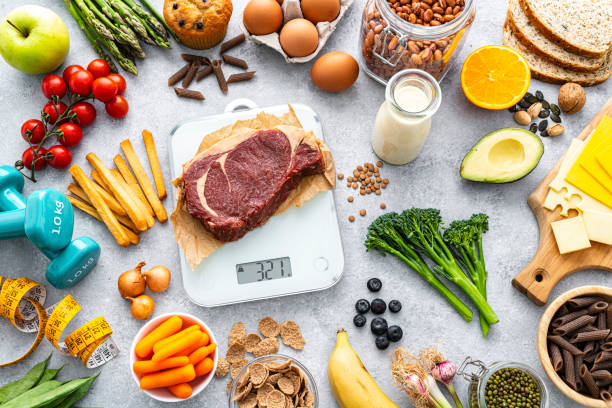Understanding Cholesterol: Definition, Symptoms, and Prevention

Understanding Cholesterol: Definition, Symptoms, and Prevention
Cholesterol is a waxy, fat-like substance, produced by the liver to carry out essential functions. It is essential in producing hormones, vitamin D, and substances that help digest foods. However, excessive levels of cholesterol in the blood can lead to serious health complications, including heart disease, stroke, and peripheral artery disease.
What is Cholesterol?
Cholesterol is a waxy, fat-like substance that circulates in the bloodstream. It is essential for building and maintaining cell membranes, producing hormones, and facilitating the absorption of fat-soluble vitamins.
Cholesterol is transported through the bloodstream by lipoproteins, with the two main types being low-density lipoprotein (LDL) and high-density lipoprotein (HDL).
Types of Cholesterol
- LDL cholesterol: is also known as bad cholesterol, because high levels can lead to plaque buildup in the arteries, increasing the risk of heart disease and stroke.
- HDL cholesterol: is called good cholesterol, it helps carry cholesterol away from the arteries and back to the liver, where it is processed and removed from the body.
Causes of High Cholesterol
- Diet: Unhealthy diets such as consuming foods high in saturated fats, trans fat, and excess added sugar can increase cholesterol levels and general poor heart health.
- Lack of Physical Activity: A sedentary lifestyle can lower HDL cholesterol and increase LDL cholesterol, contributing to an imbalance that raises the risk of heart disease.
- Obesity: Being overweight, particularly having a body mass index (BMI) of 30 or higher, is linked to higher levels of LDL cholesterol and triglycerides. Obesity can also reduce HDL cholesterol levels, further increasing the risk of cardiovascular issues.
- Smoking: Smoking damages the walls of blood vessels, making them more prone to accumulating fatty deposits, including cholesterol. It also lowers HDL cholesterol, which is essential for removing excess cholesterol from the body.
- Alcohol Consumption: Drinking excessive amounts of alcohol can lead to higher levels of total cholesterol and triglycerides, which can contribute to the development of heart disease.
- Age: As people age, their cholesterol levels naturally increase.
- Underlying Medical Conditions: Underlying conditions like diabetes, hypothyroidism, kidney, and liver disease can contribute to increased cholesterol.
Symptoms of High Cholesterol
High cholesterol is often asymptomatic, earning it the nickname silent killer. It is often discovered through routine blood tests that measure cholesterol levels. However, if left excessively high or unmanaged it can lead to:
- Chest pain (angina)
- Heart attacks
- Stroke
- Fatigue
- Peripheral artery disease.
Prevention and Management
- Exercise regularly: Perform moderate-intensity physical activity for at least 150 minutes weekly.
- Maintain a healthy weight: Aim for a body mass index (BMI) between 18.5 and 24.9.
- Quit smoking: Smoking damages blood vessels and increases LDL levels.
- Limit alcohol consumption: Excessive drinking can raise triglycerides and blood pressure.
- Routine Check-Ups: Regular cholesterol screenings can help monitor and manage cholesterol levels effectively.
Foods to Avoid When Managing High Cholesterol
If cholesterol levels are high, it is essential to avoid certain foods that can exacerbate the problem. Here are some of the foods to avoid:
Trans Fats
Trans fats are artificially created fats found in partially hydrogenated oils. They are often used in processed foods to improve shelf life and texture. Common sources include fried foods, baked goods like cakes, and margarine.
Trans fats can raise LDL cholesterol levels while lowering HDL cholesterol, making them particularly harmful.
Saturated Fats
Saturated fats are primarily found in animal products and some plant oils. Foods high in saturated fats include red meat, cheese, whole milk, sausages, bacon, and hot dogs.
The American Heart Association recommends limiting saturated fat intake to less than 5% to 6% of total daily calories to maintain healthy cholesterol levels.
Refined Carbohydrates and Sugars
Refined carbohydrates and sugars can increase cholesterol levels and lead to other health issues. Foods to be cautious of include white bread and pastries, sugary beverages, candy, and high snacks.
Processed Foods
Processed foods are often high in unhealthy fats, sugars, and sodium, making them detrimental to cholesterol levels. Common examples are fast foods, packaged snacks, and instant noodles.
Fast and Fried Foods
Fast foods are often loaded with unhealthy fats, sugars, and sodium, which can contribute to high cholesterol levels. Examples are burgers, fried chicken and pizza.
Conclusion
Managing cholesterol levels is crucial for heart health, and dietary choices play a significant role. Avoiding foods high in trans fats, saturated fats, refined carbohydrates, and sugars can help maintain healthy cholesterol levels and reduce the risk of heart disease. Instead, incorporate heart-healthy foods like fruits, vegetables, whole grains, and lean proteins into your diet. Regular exercise and routine check-ups can also aid in managing cholesterol levels effectively.
